Rebecca Romney (died 1644) was a London based investor. [1]
Contents
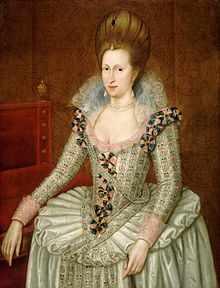
Rebecca Romney (died 1644) was a London based investor. [1]

She was a daughter of Robert Taylor, a London merchant, and Elizabeth, daughter of Hugh Hatton of Cheshire. [2] Robert Taylor was Sheriff of London with the haberdasher John Garrard in 1593. After his death, Elizabeth married James Danvers of London. [3]
Rebecca married the London haberdasher and merchant adventurer Sir William Romney of Ironmonger Lane (died 1611). [4] He was a governor of the English East India Company. His family was from Tetbury, where his executors founded a school. [5] The phrasing of his will shows that he was a committed Puritan. [6]
An edition of Paul Baynes's A helpe to true happinesse includes a dedication to "the Lady Rebecca Romeny" from her "loving Nephew. E. C.", Ezekiel Charke. [7] Baynes's Christian Letters were similarly dedicated by Charke to Elizabeth, Lady Lennard, a daughter of the Lord Mayor of London, Stephen Slaney, and Mary, Lady Weld, widow of the Lord Mayor, Sir Humphrey Weld, acquaintances of Charke who were probably well known to Lady Romney. Charke's wife Margaret was a daughter of Richard Hooker. [8]
Henry Hudson named the "Romney Islands" near Cape Smith north of Mosquito Bay (Nunavut) after her or her husband. [9] After the death of her husband, Rebecca, Lady Romney, was named among the "Merchants Discoverers of the North-West Passage" in a charter granted to that company by James VI and I on 26 July 1612. [10] Prince Henry was "Supreme Protector" of the Company of Discoverers, [11] according to the grant made to the investors, including Lady Romney, in July 1612. The grant narrates the sixth voyage of the partnership, when Henry Hudson sailed in search of a passage by the North-West of America to the "Sea of Suz" or South Sea to China, Japan, and the Philippines. [12]
Rebecca Romney was the "Lady Rommeny" of "Fishmonger Lane" (sic) involved with George Abercromby, a gentleman of the queen's robes, and the goldsmith George Heriot, in pawning one of the jewels of Anne of Denmark in March 1613 for £1,200. [13] Anonymous city investors petitioned Anne of Denmark in 1610 to intercede with James VI and I to fund the search for a northern passage to China and Japan. [14] Anne of Denmark has been linked with voyages of discovery and investment in voyages by aristocratic women in her close circle, while Romney had her own connections with commerce in the city. [15]
Rebecca Romney, as a philanthropist, founded four exhibitions (scholarships) for the sons of haberdashers in 1629, two at Emmanuel College, Cambridge and two at Sidney Sussex College, Cambridge. [16] She also loaned money to the Virginia Company, [17] and this has been connected with a charitable initiative to send to send poor children from London to the colony. [18]
Her children included: [19]
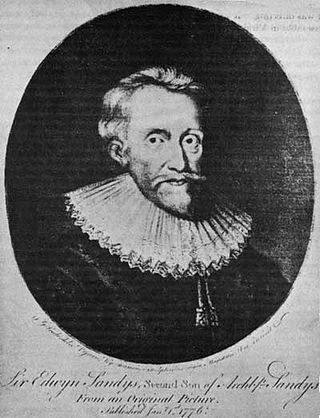
Sir Edwin Sandys was an English politician who sat in the House of Commons at various times between 1589 and 1626. He was also one of the founders of the proprietary Virginia Company of London, which in 1606 established the first permanent English settlement in what is now the United States in the colony of Virginia, based at Jamestown. The parish of Sandys, in Bermuda is named after him.

The Royal African Company (RAC) was an English trading company established in 1660 by the House of Stuart and City of London merchants to trade along the West African coast. It was overseen by the Duke of York, the brother of Charles II of England; the RAC was founded after Charles II ascended to the English throne in the 1660 Stuart Restoration, and he granted it a monopoly on all English trade with Africa. While the company's original purpose was to trade for gold in the Gambia River, as Prince Rupert of the Rhine had identified gold deposits in the region during the Interregnum, the RAC quickly began trading in slaves, which became its largest commodity.

Charlotte Charke was an English actress, playwright, novelist, and autobiographer. She began acting at the age of seventeen in breeches roles, and took to wearing male clothing off stage as well, performing and being publicly known as "Charles Brown" from 1741. Her later career and her writings were conducted under her own name, "Mrs. Charlotte Charke", and identified her as the daughter of Colley Cibber. After being unsuccessful in a series of jobs associated with men at the time, such as valet, sausage maker, farmer, and tavern owner, she succeeded in her career as a writer and continued her work as a novelist and memoirist until her death in 1760.
Edward Conway, 1st Viscount Conway PC was an English soldier and statesman. He was the son and heir of Sir John Conway of Arrow, and his wife Ellen or Eleanor, daughter of Sir Fulke Greville of Beauchamp's Court, Warwickshire.
Sir William Romney's School is an 11–16 secondary school with academy status in Tetbury, Gloucestershire, England. Pupils come from the Tetbury, Leighterton, Stroud, Cirencester, Nailsworth and Avening areas. In 2016 the school achieved a 'Good' rating from Ofsted.
John Slany, Slaney or Slanie, etc., was an English merchant and ship builder of Shropshire origins who became Master of the Merchant Taylor's Company in 1620, and was the first and only Treasurer of the Newfoundland Company, chartered in 1610.

The Weld family may refer to an ancient English family, and to their possible relations in New England, an extended family of Boston Brahmin. An early record of a Weld holding public office, is the High Sheriff of London in 1352, William. In the 16th and 17th centuries people called Weld and living in Cheshire began to travel and to settle in the environs of London, in Shropshire, in Suffolk and thence in the American Colonies, and in Dorset. While most of the Welds of England had adopted Protestantism, the exception was all three sons of Sir John Weld of Edmonton, who married into elite recusant families, thus reverting, with their descendants, to Roman Catholicism. The noted Catholic Weld lineage, unbroken till the new millennium, is that of Lulworth Castle in Dorset.
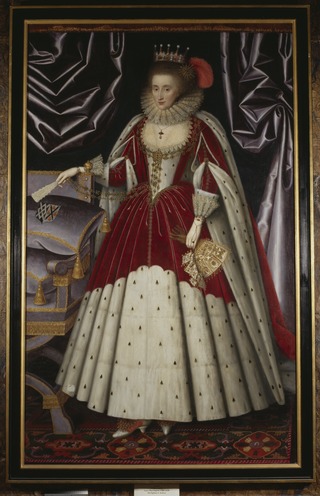
Lucy Russell, Countess of Bedford was a major aristocratic patron of the arts and literature in the Elizabethan and Jacobean eras, the primary non-royal performer in contemporary court masques, a letter-writer, and a poet. She was an adventurer (shareholder) in the Somers Isles Company, investing in Bermuda, where Harrington Sound is named after her.

Sir Richard Levett was an English merchant, politician and slave trader who served as Lord Mayor of London in 1699. Born in Ashwell, Rutland, he moved to London and established a pioneering mercantile career, becoming involved with the Bank of England and the East India Company. Levett was acquainted with many prominent individuals during his time in London, among them Samuel Pepys, John Houblon, William Gore, Sir John Holt, Robert Hooke, and Charles Eyre. He acquired several properties in Kew and Cripplegate.
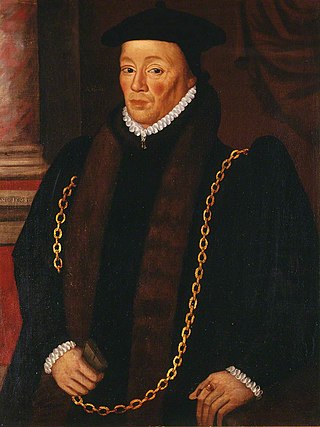
Sir William Garrard (1518–1571), also Garrett, Gerrarde, etc., was a Tudor magnate of London, a merchant citizen in the Worshipful Company of Haberdashers, who became alderman, Sheriff (1552–1553) and Lord Mayor of London (1555–1556) and was returned as an MP for the City of London. He was a senior founding officer of the Company of Merchant Adventurers to New Lands in 1554/55, having been involved in its enterprises since the beginnings in King Edward VI's time, and for the last decade of his life was one of its permanent governors. He worked hard and invested largely to expand English overseas trade not only to Russia and the Levant but also to the Barbary Coast and to West Africa and Guinea.

Sir Humphrey Weld was an English merchant who was Lord Mayor of London in 1608.
Sir George Whitmore was an English merchant who was Lord Mayor of London in 1631. He supported the Royalist cause in the English Civil War.

Sir William Whitmore was an English landowner and politician who sat in the House of Commons at various times between 1621 and 1626.

Sir John Lawrence was an English merchant who was Lord Mayor of London from 1664 to 1665. He was therefore Lord Mayor during the period of the Great Plague of London.

Sir John Weld was a wealthy landowner and London merchant, the son of a Lord Mayor of London and the father of the branch of the Weld family which became settled at Lulworth Castle in Dorset. He was a charter member and Council assistant of the Newfoundland Company of 1610.
Sir John Weld (1613–1681), of Chelmarsh and Willey, Shropshire was an English politician who sat in the House of Commons in 1679.
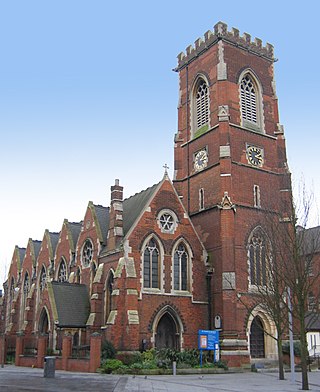
St Mary's Church is a Church of England parish church in Acton in the London Borough of Ealing. The present church, in red brick with stone dressings in a decorated style, was designed by Horace Francis and constructed 1865–1867. The church was listed Grade II in 1981.
Robert Abercromby or Abircrumby was a Scottish leatherworker serving the Scottish monarchy in the 16th century.
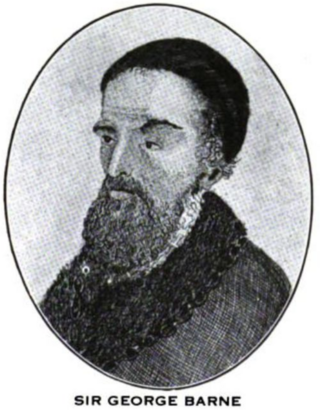
Sir George Barne was an English businessman in the City of London who was active in developing new trading links with Russia, West Africa and North America, far outside what had been traditional English trading patterns. Created a knight in 1553, he served as Sheriff of London and Lord Mayor of London. He was the father of Sir George Barne and grandfather of Sir William Barne. Nicholas Culverwell was probably a nephew.
Sir William Romney was an English merchant. He was governor of the East India Company and took part in other ventures to develop English interests in overseas trade.